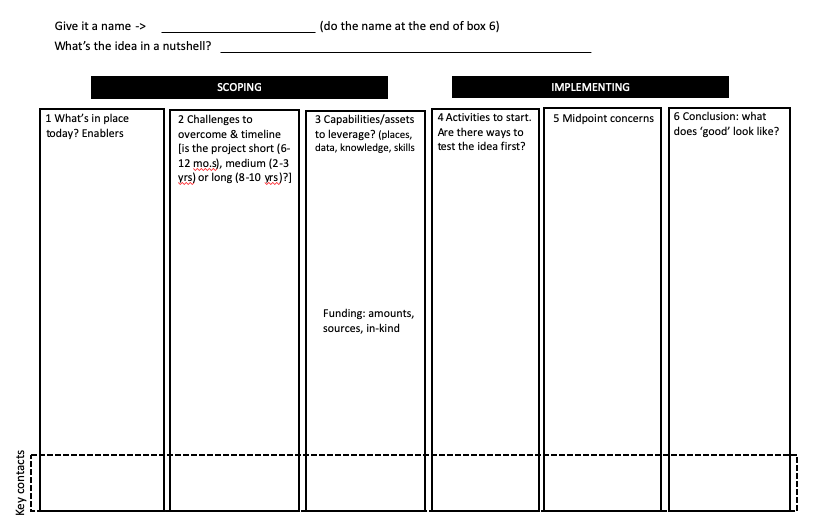Use storyboards to develop partner collaborations
When you’re exploring possible partnerships between groups or organisations, it might be relatively easy to find areas of mutual interest. You’re both interested in app-based products, or local responses to climate change. But how are you going to work on that together?
You can use a collaborative session to identify possible project ideas and then create storyboards for how the projects might work.
Creating a storyboard helps the partners anticipate how they’ll navigate the project and outline a shared view of how it could work. It serves as a thought experiment and helps partners understand each other better. How will each partner contribute or be constrained?
In a recent partnership exploration session I ran, I had three mixed groups that storyboarded three possible projects. They worked through some of these common questions to create project storyboards:
Scoping
What’s in place today? What are the enablers? (can include partners’ objectives)
What challenges need to be overcome?
Are there other capabilities/assets to leverage (places, data, knowledge, skills)?
Timeline: How does the project look as short (6-12 mo.s), medium (2-3 yrs) or long (8-10 yrs)?
How much funding is needed? What funding is available or could be leveraged?
Implementation
Activities to get started - is there a way to test the ideas first?
Midpoint concerns (examples might be: will term-limited staff still be in post? Does funding have to be spent by a specific date? Are some facilities only available seasonally?)
When we’re done, what does ‘good’ look like?
Once the group has worked through these steps, they can give the project a name. That makes an easy short hand for project development.
You can set up the storyboard as 6-8 boxes across a landscape-formatted page, like this:
If appropriate, ask the group to identify key stakeholders or decision makers to begin working with (shown in the dotted line box above).
Get out the storyboards next time you’re working with partners to outline practical, mutually beneficial projects. You’ll wind up with a fairly actionable outline to get you started.





